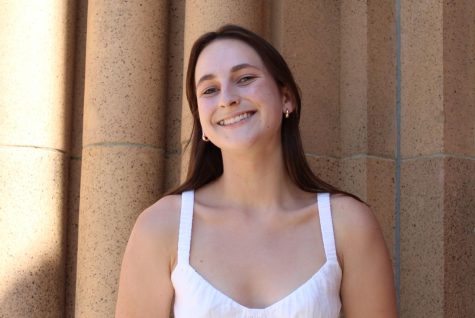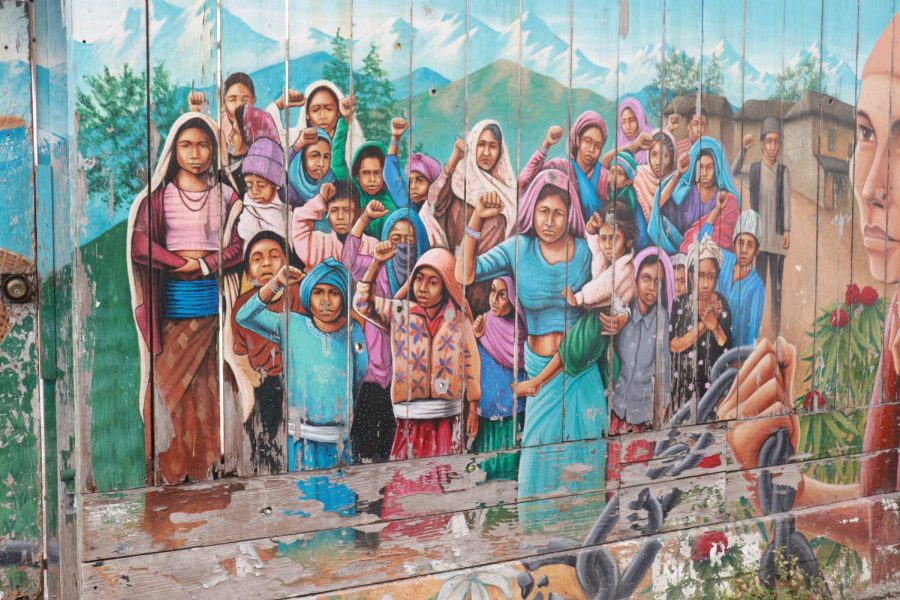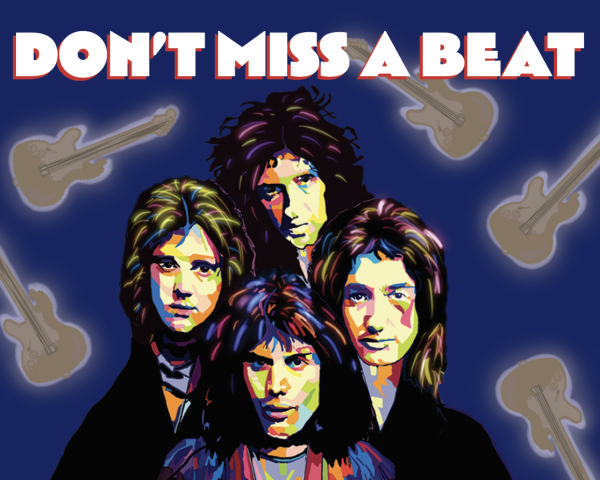City of Color
How San Francisco’s Mission District murals illustrate the Bay Area’s rich cultural influences and history
Walking through the Mission District of San Francisco is an adventure for the senses. Your eyes take in the bright colored murals painted on every wall while your ears hear the sound of laughter and traffic and you can smell delicious food drifting through the streets from family owned taquerias nearby. Just by walking through the neighborhood, you can grasp a sense of the rich culture and history carried by those who live here.
The Mission District is home to countless bright and vibrant works of art. Lively street art ranging from graffiti signatures to large murals covers nearly every wall and fence. The murals visually immerse their viewers in the culture of San Francisco’s Mission District, depicting recent political movements, immigrant histories and the underrepresented communities. Far more than pretty paintings, the murals offer a visual way to immerse oneself in the stories of the area with representation, history and culture.
For over 50 years, artists have found this neighborhood of San Francisco to be a safe haven for artistic expression. In the 1970s, the Mission was filled with art galleries, festivals and performances, cultivating a creative environment that would soon foster a street art movement.
Some of the first muralists in the area called themselves Las Mujeres Muralistas, Spanish for “The Muralist Women.” They were a young group of Latina and Chicana artists who formed a collective to paint murals in the Mission District, often featuring messages of womanhood, beauty and cultural change.
After building up an artistic reputation in the community, they began receiving commissions and inviting new artists to join the group, one of them being Susan Cervantes. Cervantes recalls Las Mujeres Muralistas to be one of her first inspirations.
“I was inspired to see women on scaffolding and painting a mural on a huge two story building,” Cervantes said. “I really loved the way they worked together as a group collaborating so I thought it was something that would be great to be shared with all kinds of people.”
At the time, Cervantes was teaching painting at the Precita Valley Community Center and thought that Las Mujeres Muralistas commission would be the perfect opportunity to get the community involved. Cervantes’ painting class gradually shifted to a mural painting class as her students started painting on a larger scale. Continuing to create artwork as a group, they began signing under the name “Precita Eyes Muralists.”
“We worked collectively so we didn’t put anybody’s name on it or any one person that designed it,” Cervantes said. “It was a collaboration so we signed it as Precita Eyes Muralists.” Cervantes strongly believes that including the community in aspects of every mural is what sets San Francisco apart from other street art heavy cities.
“I think [we] are different because we involve the community,” said Cervantes.
Other artists, such as Daniel Gálvez, notice the District’s art to be very impactful, specifically the way they incorporate the community into their art.
“[It has] a classic theme that represents the neighborhood,” Gálvez said. “The murals in the mission are reflective of who lives there, what’s important to them, what things they celebrate and who their heroes are.”
When invited to paint a mural in the Mission District, Gálvez valued how his work would reflect the community. When deciding what to depict, he asked around to learn what was important to residents in the area. Gálvez found his answer when talking to the director of El Centro Legal de la Raza, a legal services agency that protects and works to advance the rights of marginalized groups.
“They said that the carnival was a really big event just starting to develop,” Gálvez said. “[It] was really just showing Latino pride and had all the kind of Latino music involved and a lot of people with costumes. It was just something that was kind of a celebration of what the neighborhood was about.”
This theme of a reflection of the neighborhood allows residents such as Octeio Loza, who has lived in the area since 1973, to be understood by people worldwide. Looking out from his home, Loza recounts seeing people from all over the world coming to view the murals that fill his street.
“Pre-pandemic we were looking at 800-900 people, most from London, Australia and France,” Loza said. “It’s really interesting, you meet a lot of people from all over the world.”
While many do not enjoy the noise that comes along with heavy tourism, Loza admits it is part of living in a city and an area so many people want to see.
“I’m so glad to have people stop by,” Loza said. “In my opinion, [the murals are] for everybody to come by and see and enjoy and appreciate. Hopefully people can talk about it and send other people out here.”
Loza received a commission from artist Lucia Gonzalez-Ipolito for a mural to be painted on his garage. After approaching Loza to ask if she could paint the mural, he gave Gonzalez-Ippolito complete artistic freedom. The mural depicts the social and political changes of the Mission District and San Francisco, with a specific focus on the gentrification of the area.
“I thought it was something new and cool,” Loza said. “I’m really happy with the result. It hits a nerve and sends a message. I like how everybody sees different things when they look at it.”
No matter what perspective you view the murals of San Francisco’s Mission District from, there is no denying the beautiful culture and history reflected in their paint strokes. From themes of gentrification to women empowerment and everything in between, the murals encompass all aspects of the surrounding community. Each mural portrays the neighborhood and its residents in a unique and alluring way.
“There [is] something special about a mural that becomes a part of people’s lives,” Gálvez said. “They were there for free, [on] a walk to work … [people] would see them there, and it became part of their lives. Here was art, enriching the lives of people.”
Print Issue
Please click on the three vertical dots on the top right-hand corner, then select “Two page view.”

2022-2023 Staff Writer
2023-2024 Editor-in-Chief
I joined C Mag because it is a great community on campus! My favorite part about being a part of...

2022-2023 Staff Writer
2023-2024 Business Manager
I joined C Mag because I love digital design and writing about arts + culture! My favorite parts...

2021 - 2022 - Staff Writer
2022-2023 - Social Media Manager
I joined C-mag to be part of a writer's community. C-Mag has such an impressive combination...







